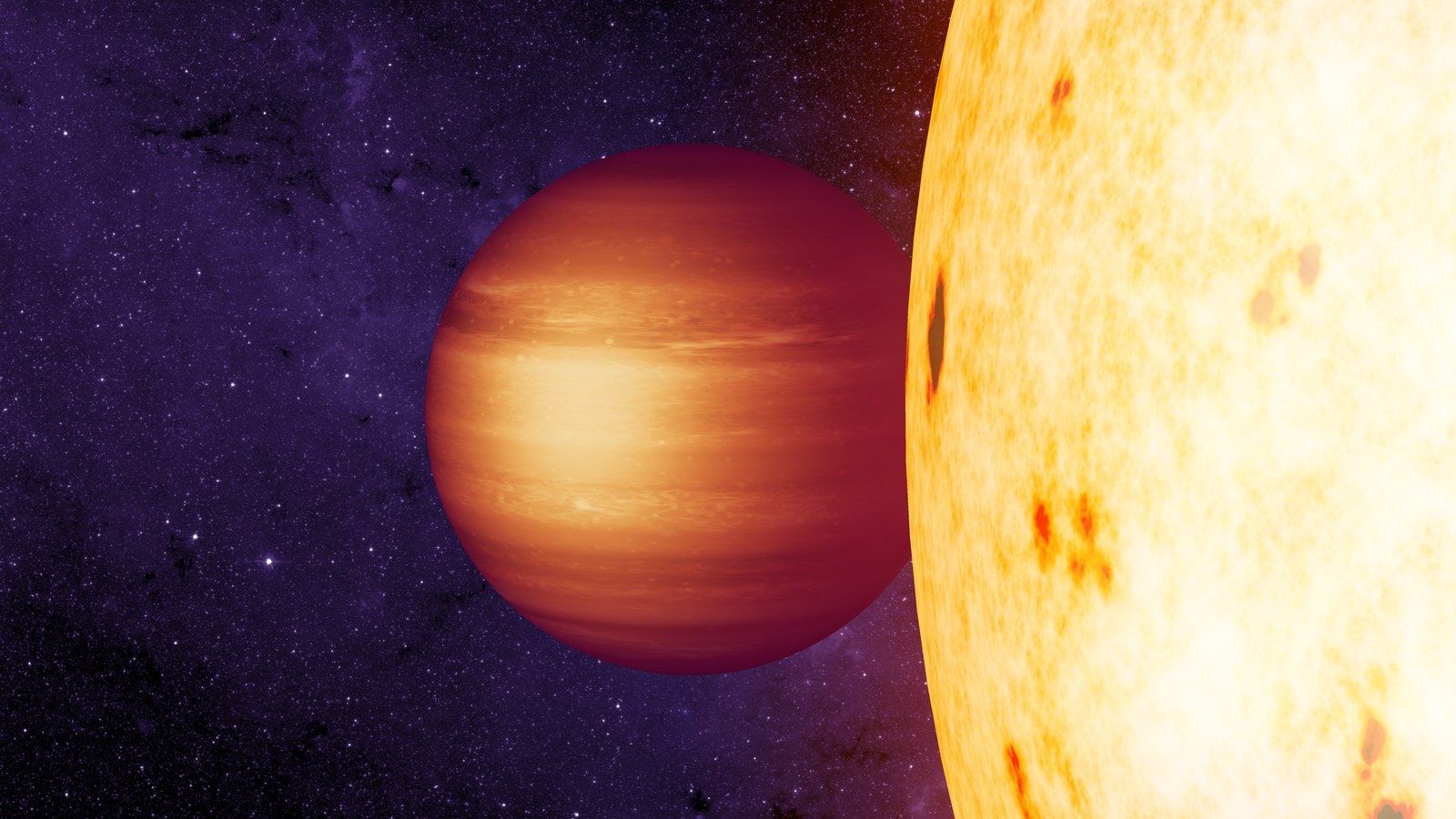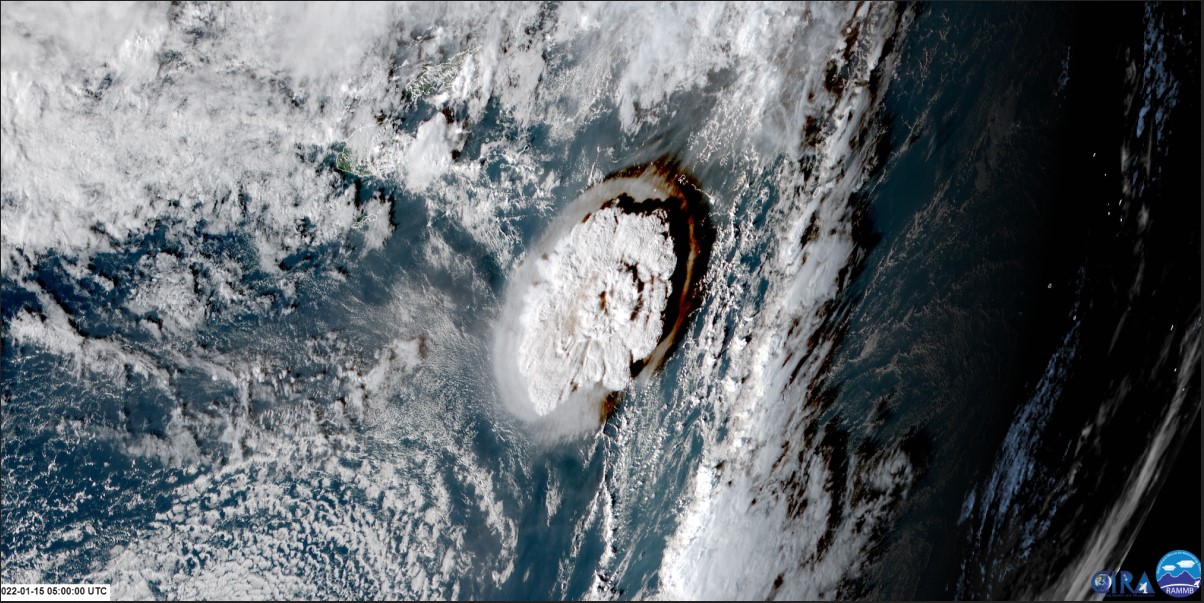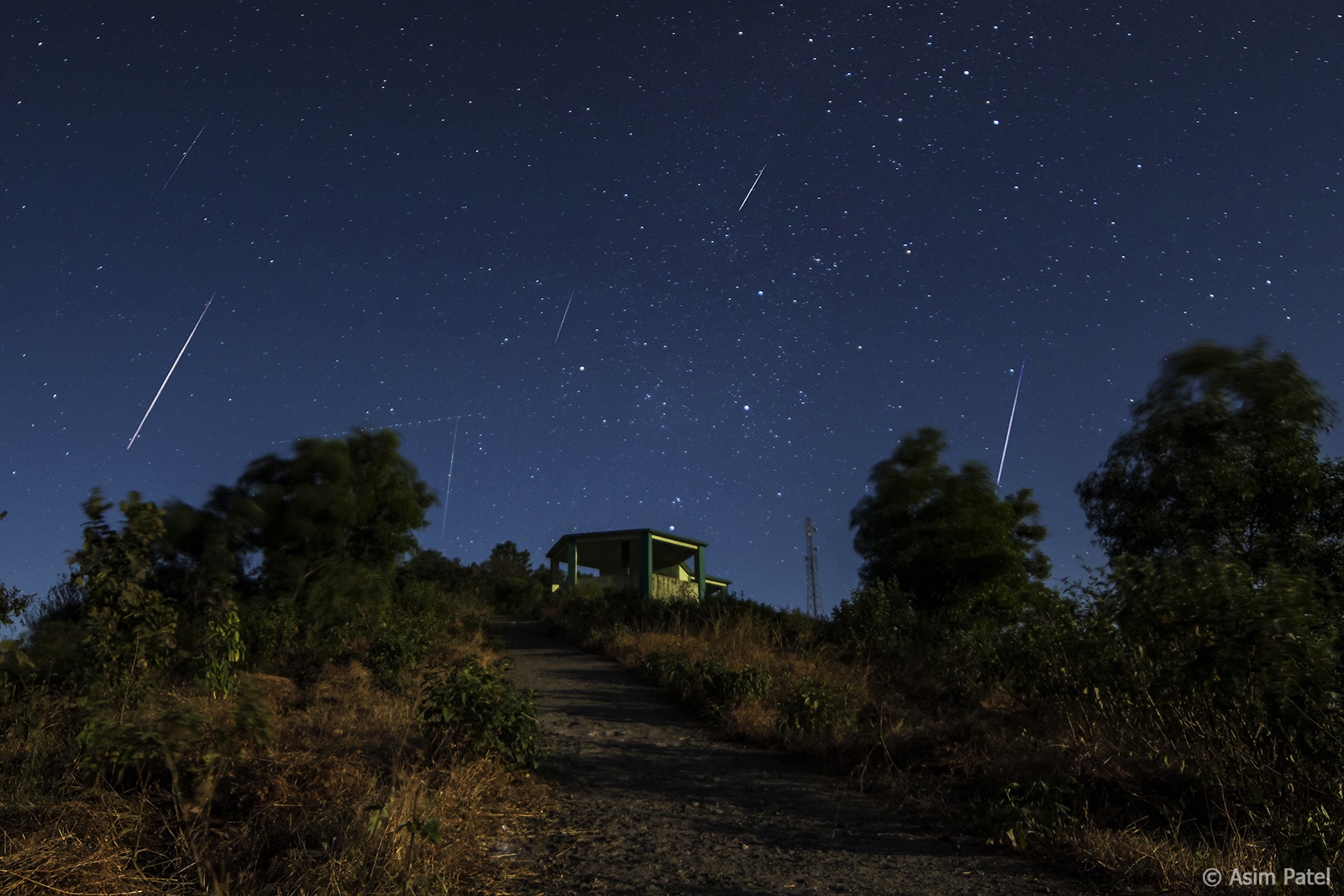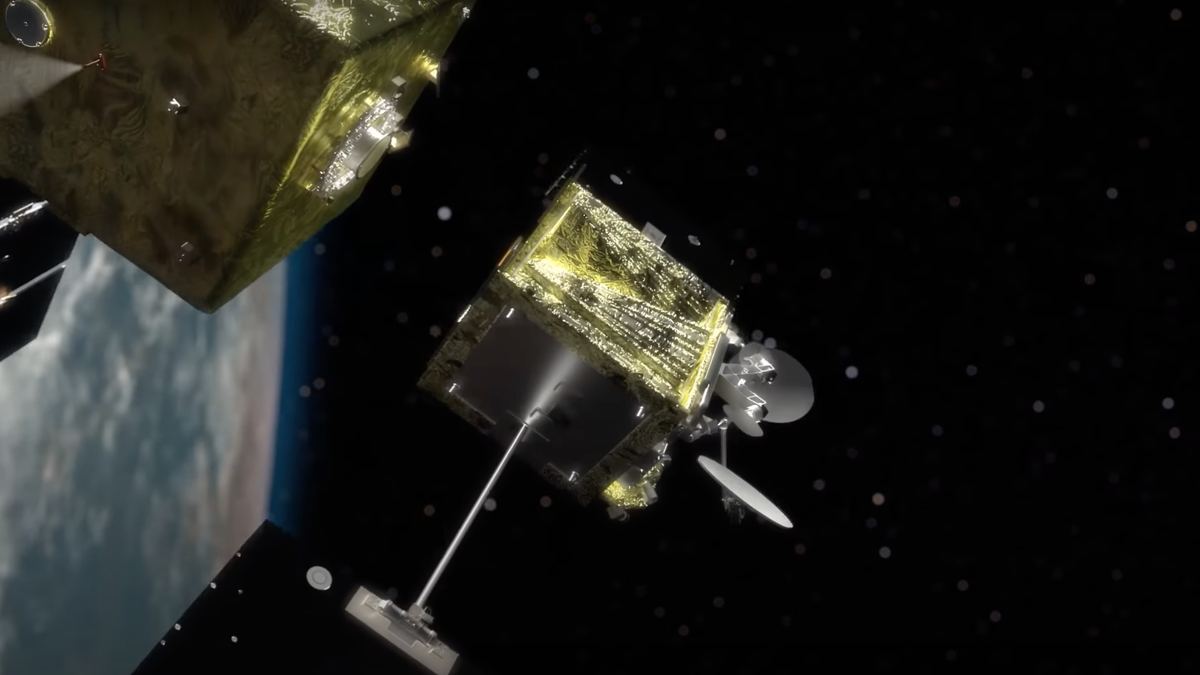Hot Jupiters are large gas planets that orbit their star closely. Unlike our Jupiter, which radiates more heat than it gets from the Sun, hot Jupiters get more heat from their star than from their interior. As a result, they can have a surface temperature of 1,000 K rather than the 160 K that Jupiter has. They are one of the more common types of exoplanets and the easiest type of exoplanet to discover.
Continue reading “A Brown Dwarf is Getting Hit With So Much Radiation it's Hotter Than the Sun”BepiColumbo Makes its Third Flyby of Mercury, Seeing the Planet's Night Side
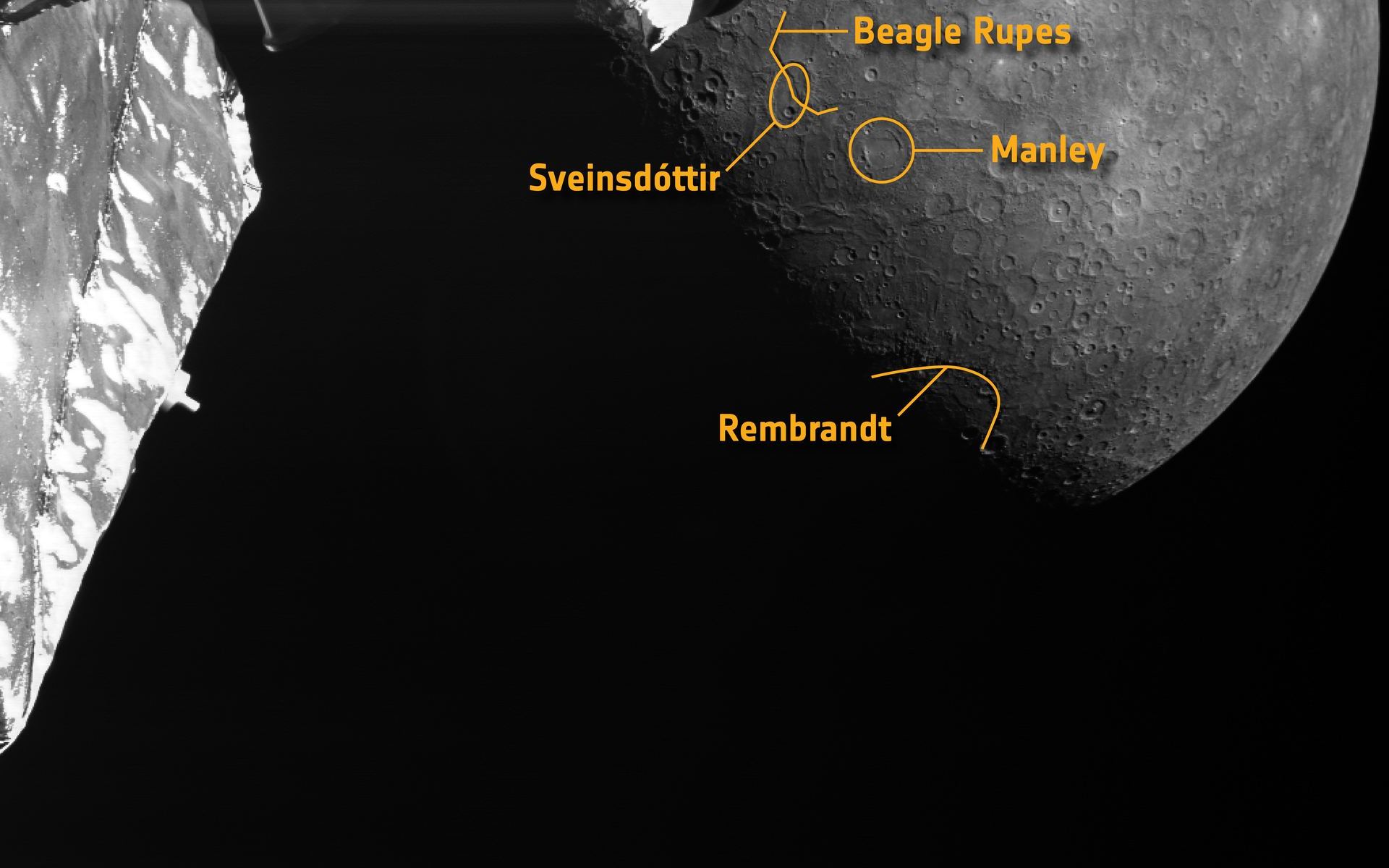
ESA’s BepiColumbo continues its journey to Mercury by making another flyby … of Mercury! This is the third of six planned flybys of its destination planet, each of which gives the spacecraft a gravitational deceleration. Eventually, it’ll slow down enough to go into its final operational orbit.
In the most recent flyby on June 19, 2023, the spacecraft sped past the planet’s night side and took a series of images from 236 km (145 miles) above Mercury’s surface. From these 217 images, the BepiColumbo team created a movie of the flyby, which includes a 3D scene.
Continue reading “BepiColumbo Makes its Third Flyby of Mercury, Seeing the Planet's Night Side”Bringing the Gift of Hope to Ukrainian Kids through Astronomy

The war in Ukraine has taken a terrible toll, and the damage extends far from the shifting battle lines. In addition to the many soldiers and civilians who’ve died, over 2.5 million children have been displaced within the country. The war has also exacerbated the problems of orphaned children, who are especially vulnerable in urban areas where the fighting has been most intense. Ensuring these children and their families can get adequate food and medical care is always challenging. Ensuring they have access to education and counseling services so their lives are not severely interrupted is even more so.
But there’s also the need for inspiration and hope for the future, which becomes all the more important in times of war and displacement. This is the purpose of Earthlings Hub, a non-profit organization dedicated to bringing astronomy and science education to refugee and orphan children in Ukraine. Founded in 2022 by members of the Blue Marble Space Institute of Science (BMSIS), Earthlings Hub is made up of scientists, teachers, and psychologists working to provide students with access to scientific research, equipment, and an inquiry-based educational program that goes beyond the standard school curriculum.
Continue reading “Bringing the Gift of Hope to Ukrainian Kids through Astronomy”The Milky Way’s Supermassive Black Hole had a Burst of Activity 200 Years Ago. We Just Saw the Echo.
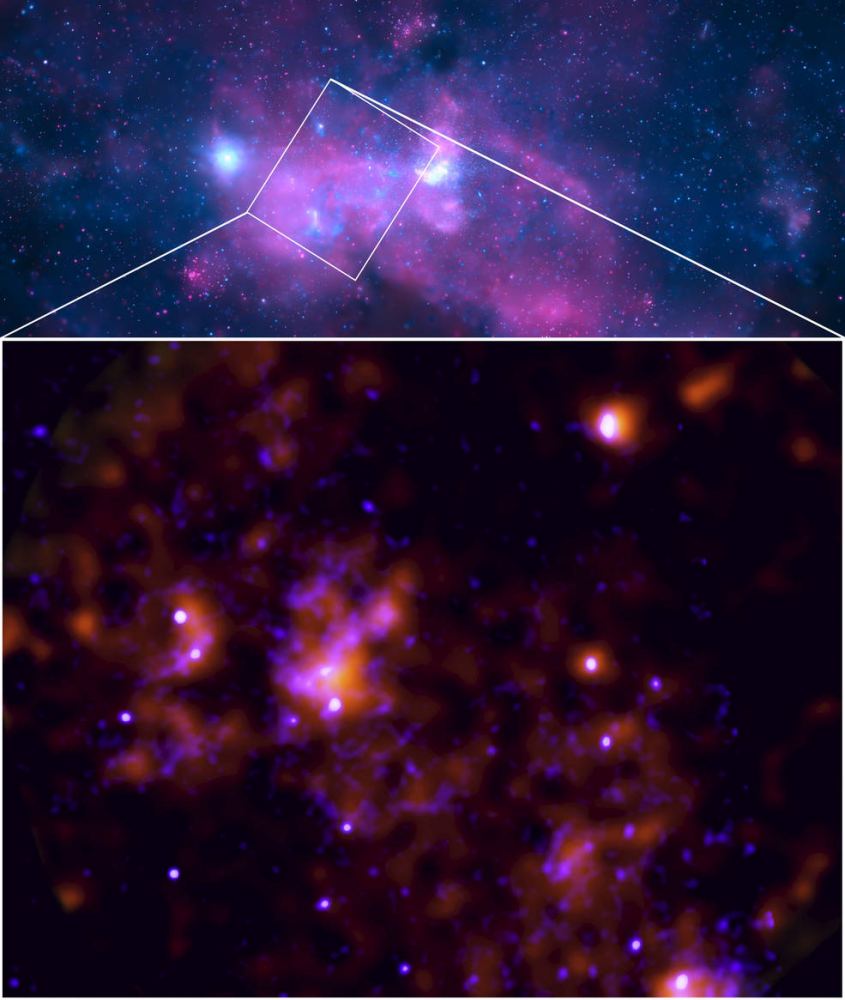
We in the Milky Way Galaxy are pretty lucky to have a fairly quiet central supermassive black hole in Sgr A*. It’s not loud and bright like an active galactic nucleus. It appears to be active for brief periods before going to sleep. Two hundred years ago, it “woke up” for about a year and a half and had a bite to eat.
Continue reading “The Milky Way’s Supermassive Black Hole had a Burst of Activity 200 Years Ago. We Just Saw the Echo.”The Most Intense Lightning Ever Seen Came From Last Year's Tonga Volcano Eruption
The enormous undersea volcano that erupted in Tonga last year was record-breaking in many regards. It generated the highest-ever recorded volcanic plume, it triggered a sonic boom that circled the globe twice, and was the most powerful natural explosion in more than a century.
Now, scientists studying the eruption say the volcanic plume created record-breaking amounts of volcanic lightning, the most intense lightning rates ever documented in Earth’s atmosphere. While the ash obscured the view, satellites and ground-based radio antennas with specialized instrument could peer through the ash and see every stage of the unfolding eruption. Over 200,000 lightning flashes were detected in the volcanic plume, more than 2,600 flashes every minute.
Continue reading “The Most Intense Lightning Ever Seen Came From Last Year's Tonga Volcano Eruption”Parker Solar Probe Makes a Surprising Discovery About the Source of the Geminid Meteor Shower
If you’ve ever seen a meteor shower, you know it can be an amazing sight. You watch the skies as every few moments there’s a streak of light. Sometimes bright and in your field of vision. Sometimes starting just out of the corner of your eye. Although a meteor can occur at any time, they tend to appear at certain times of the year, such as the Perseids of August, or the Orionids of October.
Continue reading “Parker Solar Probe Makes a Surprising Discovery About the Source of the Geminid Meteor Shower”A New Mission Will Grab Dead Satellites and Push Them Into the Atmosphere to Burn Up
Plenty of news stories have focused on the danger posed by Kessler syndrome. In this condition, space is made inaccessible by a cloud of debris surrounding our planet that would destroy any further attempts to get into orbit. Therefore, plenty of companies have sprung up that problem to take care of the problem, from blasting derelict satellites with lasers to helping to refuel them; lots of business models have been created to capture this opportunity. One of the farthest along is Astroscale. This British start-up is tackling the problem with one of the more conventional techniques – linking up with an existing satellite to deorbit it. And recently, they released a promotional video for their new project – the ELSA-M.
Continue reading “A New Mission Will Grab Dead Satellites and Push Them Into the Atmosphere to Burn Up”Astronomers Find a White Dwarf Pulsar
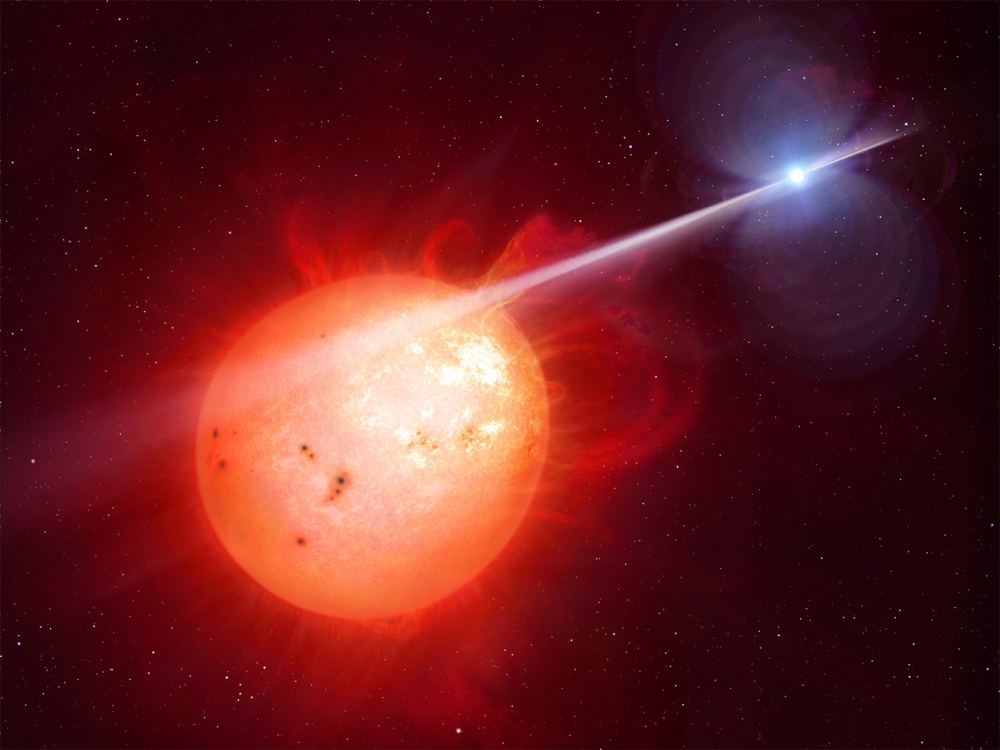
When astronomers talk about the “end states” of stellar evolution, several categories come to mind: black holes, neutron stars/pulsars, and white dwarfs. What happens if one star ends up in two of these states? That’s the case with a genre-breaking white dwarf pulsar called J191213.72-441045.1 (J1912-4410 for short). It’s part of a binary pair that includes a red dwarf star.
Continue reading “Astronomers Find a White Dwarf Pulsar”JWST Glimpses the Cosmic Dawn of the Universe

The James Webb Space Telescope (JWST) continues to push the boundaries of astronomy and cosmology, the very job it was created for. First conceived during the 1990s, and with development commencing about a decade later, the purpose of this next-generation telescope is to pick up where Spitzer and the venerable Hubble Space Telescope (HST) left off – examining the infrared Universe and looking farther back in time than ever before. One of the chief objectives of Webb is to observe high-redshift (high-Z) galaxies that formed during Cosmic Dawn.
This period refers to the Epoch of Reionization, where the first galaxies emitted large amounts of ultraviolet (UV) photons that ionized the neutral hydrogen that made up the intergalactic medium (IGM), causing the Universe to become transparent. The best way to measure the level of star formation is the H-alpha emission line, which is visible in the mid-infrared spectrum for galaxies with high redshifts. Using data from the Mid-Infrared Instrument (MIRI), an international team of researchers was able to resolve the H-alpha line and observe galaxies with redshift values higher than seven (z>7) for the first time.
Continue reading “JWST Glimpses the Cosmic Dawn of the Universe”The Suspense is Killing Us. The Next Planet in the TRAPPIST System Gets the JWST Treatment

The TRAPPIST-1 system is easily the most exciting collection of exoplanets ever discovered by astronomers. The system contains seven rocky planets orbiting an ultracool red dwarf star 40 light-years from Earth. Several of the planets are in the star’s habitable zone.
With the James Webb Space Telescope’s ability to detect and study the atmospheres of distant planets orbiting other stars, data on the TRAPPIST planets have been highly anticipated. Astronomers have now released detailed information about the second planet, TRAPPIST-1 c, theorized to be a Venus-like world. Unlike Venus, however, JWST failed to detect any trace of a thick carbon dioxide atmosphere.
Continue reading “The Suspense is Killing Us. The Next Planet in the TRAPPIST System Gets the JWST Treatment”
